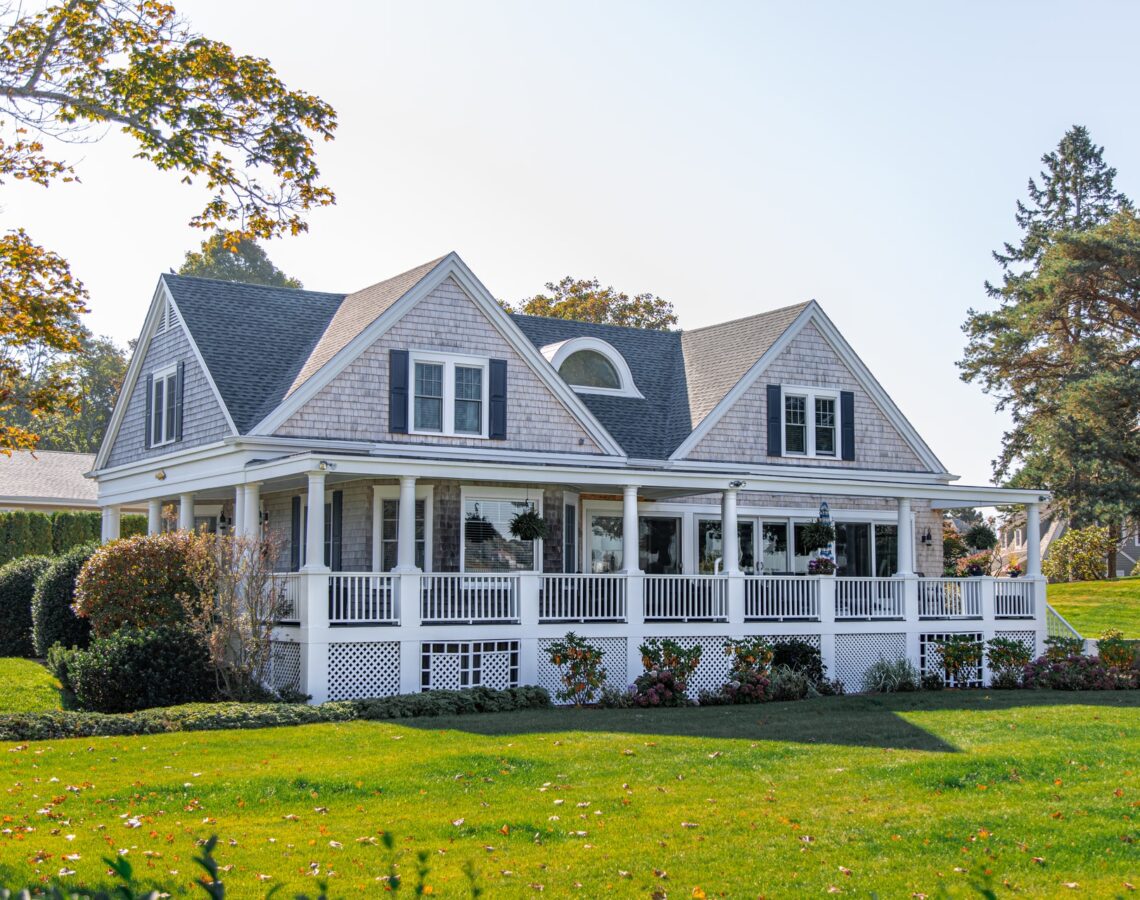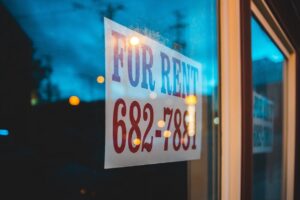The 8-Step Guide on How to Manage Rental Property as A DIY Landlord

Let’s get one thing straight: if you want to manage a rental property by yourself, you need to brace yourself. It’s no simple task.
Do you feel like your rental property is a passive money-making machine? That you just have to push the ‘start’ button, and it’ll do all the rest while you kick back and earn your dough?
You couldn’t be further from the truth. There’s a lot that goes into managing a rental property, and if you’ve decided to handle it yourself, then you’ll have to be actively involved in every aspect of the process. Otherwise, you’ll be running at a net loss. There’s a reason why property management companies are on the rise – managing rental properties is generally more trouble than it’s worth for DIY landlords.
To become a DIY landlord, you’ll need considerable knowledge of how to manage a rental property. The worst thing you can possibly do as a landlord who’s starting out in the property management industry is to eyeball it and see where it goes.
In this article, we’re going to go over everything you need to know on how to manage rental property as a DIY landlord. Here’s the 8-step guide down below, but free to click on each of the steps if you want to read about individual sections.
- Getting The Home Ready to Rent
- Getting The Right Insurance Policy, for Both Landlords and Tenants
- Increasing The Curb Appeal of The Property to Rent It Faster
- Advertising The Property for Maximum Exposure
- Screening Applicants and Choosing The Right One
- Signing The Lease: Where to Get Good Leases, What Clauses to Pay Attention to
- Regular Home Maintenance and Turnovers Between Tenants
- Software to Use for Rental Management, Accounting, and Tenant Screening
Make sure to go through all of these thoroughly, because they may just be the difference between you being a likeable, profitable landlord and a slumlord. Learning about how to manage your own rental property is the best thing you can possibly do for yourself and your tenants right now.
By the end of this guide, you should have a fairly good idea of what’s expected from you and what the best practices are to ensure that you and your tenants have a great experience together.
Step #1: Getting the Home Rent-ready
Table of Contents
Chances are that your home isn’t ready to live in just yet. Yes, it’s habitable, but it’s not the sort of place that would make a potential tenant stare at it longingly. That takes work to happen.
You need to have a good look at all the maintenance and repairs that the building needs. It’s always a good idea to hire a contractor who can give you a good estimate and spot out all the work that needs to be done. It’s important to hire a contractor who knows what they’re doing – a lousy one could result in losses and additional work.
Usually, to make a home look good as new, you should focus on these aspects of the house:
- Cleaning the home: Floors, carpets, bathrooms, windows and walls. And everything in between. All of this needs to be cleaned. You’ll notice the difference when it’s all done.
- Check all the appliances and electric circuitry: This isn’t just to see if everything is working. You also need to make sure that your home doesn’t pose a health and safety hazard to any of its inhabitants. You’ll need to hire a professional for this so there aren’t any missed details.
- Repairs, replacements, and refurbishing: check the paint, woodworks, and similar details in your home. Unless the building is brand new, there’s a high probability that these repairs will be needed. All the locks and damaged handles should be replaced too, to make way for the house’s new inhabitants.
- Appliances: If your current appliances are in good working condition, there’s nothing to worry about. However, new or recently cleaned and maintained appliances are good tenant magnets and will definitely aid you in finding the right people to live in your home.
This is the minimum you’ll need to do to make your home comfortable to live in. When your home looks good from the inside and doesn’t have any minuscule issues, you’ll net a higher rent and attract the right tenants a lot more easily.
Step #2: Getting the Right Insurance Policy, for Both Landlords and Tenants
Anything can go wrong while operating a business, and being a landlord is no different. It’s highly important to future-proof yourself by getting landlord insurance. In fact, it might be impossible to manage a rental property without insurance because the occasional damage to your property (whether natural or otherwise) could incur losses too huge to keep the business going.
Landlords’ Insurance Policy
This is where landlords’ insurance policy comes in. It’s designed specifically for you – a landlord who’s renting out one or more properties of any kind (it could be houses, apartments, shops, etc.), and protects you against any damages that may befall your rental investment property.
Landlords’ insurance policy provides you with two types of coverage: property protection and tenant liability insurance.
Property Protection
As far as property is concerned, this includes damages to your home caused by fire, lightning, wind, hail, ice, snow or other natural causes. Not only is your home protected under this policy, but also any appliances that may have been damaged during the mishap.
Tenant Liability Insurance
Tenant liability insurance is for instances where your tenants or their guests damage your property. This insurance policy will cover the damages caused and also pay for legal and medical fees involved in dealing with the situation. Here’s a detailed explanation for why tenant liability insurance is a must-have for landlords.
Renters’ Insurance
Renters’ insurance exists to protect renters from damages. Landlord policy doesn’t cover any damages that the tenants’ belongings may suffer during any incidents. This can often lead to disputes between tenants and landlords on who will cover the losses, which is why renter’s insurance is a great idea.
In case of any accidents, renter’s insurance is there to protect renters in case of any accidental damages to their belongings. We highly recommend that you, as a landlord, have your tenants get renter’s insurance so that any accidents can be settled peacefully in the future.
Insurance is necessary for a smooth landlord experience and is a must-have for anyone looking to manage a rental property.
Step #3: Increasing the Curb Appeal of the Property to Rent It Faster
What’s the first thing that you notice when you look at a home? Before you know how much a home costs, what the landlord is like, or what’s on the inside, the curb appeal is what sells the house to you.
A gorgeous looking home with a neat and tidy outer appearance is much more likely to rent out quickly and also net you a higher amount per month. It’s a no brainer that before you put your home on the market, you give your home a complete makeover.
This doesn’t mean that you should turn your home into a piece of art based on your personal taste. The home should be appealing to as many people as possible, not just yourself. It’s always a good idea to hire a professional who can give you the right tips to revamp your home’s look, but there are some good general pointers with which you simply can’t go wrong:
- Trim the bushes: Or shrubs. Or any other plants that you have outside your home. Having neat plants is necessary. You’ll find it hard to rent out your property to good tenants if your plants are in desperate need of care and de-weeding. Clear out any dead leaves and twigs that are lying around as well. Also, make sure that you’ve moved the grass.
- Paint the house: Make sure you give it a neutral color. Do NOT color your house shocking pink, no matter how much you’re in love with the color. Remember, this makeover isn’t for you, but to attract high-quality tenants. Give your house a strong appearance that’s eye-catching and appealing.
- Clean up: This one should be obvious, but your roof is probably in dire need of some love. And your walkway too! Clean them up – you can even use a pressure cleaner to wipe away years of algae, dust, and grime that have stuck on them.
These three tips should be enough to make any house a lot better, but there’s a lot more you can do to make it look like it’s newly built. Here’s a list of ideas that can make your house a lot more attractive.
Step #4: Advertising the Property for Maximum Exposure
Now that everything is set and your house looks great from every angle and has gone through all the safety checks and maintenance it requires, you can finally start looking for that perfect tenant you want to live in your home.
For that to happen, you need to spread the word that your property is up for rent. In the best way possible. Here’s what you’ll need to make that happen:
- Get a good camera: You’ll need a professional camera if you want to create attractive images for your property’s advertisement. Your smartphone simply won’t cut it. In addition to this, you’ll likely need to learn about professional photography. This will include basics, like lighting and camera angles to get sweeping shots of your property that make it look irresistible.
- Write great descriptions: Once you have the visuals covered, you’ll need to write descriptions of your house. Imagine you’re the reader, and then explain the features of your house so that the reader knows it’s the perfect house for them.
- Post your rental listing online: Some great platforms where you can advertise your property are Zillow.com, Apartments.com, Realtor.com, and Avail.co. There are plenty of other platforms too, all with their own pros and cons. In addition to these platforms, you’ll also want to advertise your property on your social media accounts and Facebook’s Marketplace.
At HomeVault, we provide all these services, and a lot more, under our property management services. Advertising a property is a lot of work and requires a lot of time. As professional property managers with decades of experience, we know exactly how to get your property out there and get it rented in the quickest amount of time, by the right tenant.
To find out more, check out our Property Management Program.
Advertising is one of the most difficult aspects of how to manage a rental property, but if done correctly, it will help you land great tenants, which makes the process worthwhile. We highly recommend you put effort into this step and lean on professionals whenever you need help.
Step #5: Screening Applicants and Choosing the Right One
If you’ve made it this far, congratulations! Assuming you’ve gone through the previous four steps, your property should be in pristine condition and your advertising should have attracted lots of potential tenants.
Now, it’s time to decide who you want living in your home! A small warning, though: screening tenants is a really time-consuming process. Tenant background checks are something you’ll want to get a coffee for, and you’ll have to rely on software too, which we’ll list down below. Here’s what you’ll need in general to perform background checks for tenants:
- Set some standards: Ask yourself what sort of tenant you’d be happy with. What kind of household income should they have? How many tenants can your home afford to have? It doesn’t make sense to have a family of 7 living in your two-bedroom home.
- Ask for applications: These applications should have all the details you’d need from your tenants, including their family size, employment details, past residence, references, household income, and pets (we highly recommend that you allow pets because it increases the likelihood of you getting a good tenant).
- Run credit and background checks: Credit checks aren’t expensive and will give you a good idea of how dependable your tenant is. As for background checks, it’s always good to talk to as many references as possible. We recommend checking with the landlord before their current one because they’re likely to get you an unbiased opinion. In case they aren’t good tenants, their current landlord might lie and make them seem a lot better than they actually are — just to get rid of them. Check for your tenant’s criminal history as well. Some of these tasks can be done via property management software, which we’ve mentioned below.
- Interview your tenants: Once you’ve selected a handful of tenants who seem like they’d be a good match for your property, have an interview with them. And then select one that you like.
Step #6: Signing the Lease – Where to Get Good Leases, What Clauses to Pay Attention to
That’s it! You just got your first tenant. It was a difficult ride, but you managed to pull through. The journey isn’t over yet, though.
The final piece of the puzzle of getting a tenant into your property is signing a lease agreement. You’re free to create your own lease agreement, but it’s always a good idea to involve a lawyer in the process. They’ll be able to protect you in case anything goes wrong in the future.

You should keep these 10 clauses in mind as they’re the most fundamental to the rental agreement:
- Names of all tenants: all the members of the family staying in your home should be mentioned.
- Limits on occupancy: This entails that only the people with their names on the lease agreement can live in the home.
- Terms of the tenancy: Will the lease expire after a certain period of time or will it be paid for on a monthly basis?
- Rental amount: How much the rent is, and how and when it’ll be paid should be mentioned here.
- Deposits and fees: Any additional fees should go in this section.
- Repairs and maintenance: Mention who will be responsible for repairs and maintenance. Usually, the landlord is responsible for wear and tear.
- Your entry to rental property: Make sure you have a right to enter your property and it’s mentioned on the lease.
- Restrictions on illegal activity: It should go without saying, but mentioning illegal activities which can’t take place on your property is a good safeguard to have.
- Pets: Do you allow pets? Which ones, and how large can they be?
- Other restrictions: Any additional rules you have for your tenants should go here.
Step #7: Regular Home Maintenance and Turnovers between Tenants
Now that your tenant has signed the lease agreement and is living comfortably in your home, you can breathe a little and relax. The hard part is done.
However, this doesn’t mean that your property will run on autopilot from here. You’ll still need to provide regular maintenance for your home and also perform safety checkups, which include air filters for your HVAC systems. Here’s a good resource to follow if you need a maintenance guide.
If your tenant has to be evicted or chooses to vacate your property, you’ll have to repeat this entire process from Step #1.
Step #8: Software to Use for Rental Management, Accounting, and Tenant Screening
Property management software might sound like it’s only for big companies, but DIY landlords use them pretty often as well.
The software’s are designed to assist you with being a landlord. A lot of processes, like payment collection and tenant screening, can be automated using them. If you’re serious about being a long-term landlord, we highly recommend that you choose software for property management and stick with it.
They are plenty of free software out there, so it’s not necessary that you break the bank just to get your hands on one.
Here’s our review of the top 5 property management software for DIY landlords, and we’re certain you’ll find one of them to suit your needs.
Our recommendation is Landlord Studio if you’re willing to pay a small fee per month. It’s got a great interface that will make managing your property a breeze.
Property management software will take out the need to keep track of all the payments that are due and what maintenance you have to pay for. They also allow your tenants to set up easy and automatic payment methods, so you don’t have to worry about it every month. They also include methods of communicating with your tenants.
The best part about property management software is that it’s meant for scaling up. This means that if you like the feel of managing rental properties, you could keep expanding your property portfolio over time and these software will make keeping track of them very simple.
Ready to Start Managing Your Own Rental Property?
Managing a rental property is an arduous and straining task. However, if done correctly, it can become easy and highly rewarding, and even turn into a career path!
We always recommend keeping your property in the best shape possible so it’s appealing to high-quality tenants. Once you have reliable and responsible tenants living in your home, you’ll have to worry about much less than you would otherwise.
However, being a landlord isn’t for everyone, and things can go horribly wrong for inexperienced landlords. That’s why we’re here — to back you up.
HomeVault offers high-quality property management services for great prices. Having decades of experience in the industry and a strong team of professionals with us, we always make sure that the tenants and landlords who work with us go through a relaxing and smooth experience.
We handle your property for you, from start to finish. All you have to do is sit back and get your rental income. We even offer a guaranteed income package, which means you’ll get rent even if there aren’t any tenants living on your property.
Credits: Erik Mclean on Unsplash, Todd Kent on Unsplash.



I appreciate the valuable guidance you provided on self-managing rental properties, which offers numerous benefits such as greater control over property management decisions, cost savings by eliminating management fees, and more. Thank you for sharing your insights!
It’s great that you elaborated that understanding the aspects of managing a property would help with proper property management. After moving to our current area, my wife wanted to have our properties rented for a great financial income. She asked if I had thoughts on the best option for efficiently managing the property. Thank you for the tips on the importance of planning. I’ll tell her we can consult a property management service as they can provide more information about the property managing process.